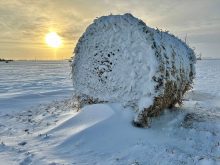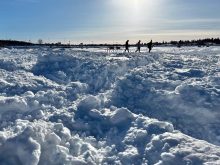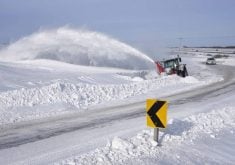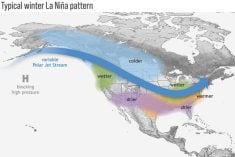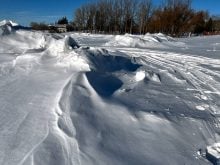It’s time to look at the probability of snow, or how often we should expect snowfall on any given day during the winter. I’ve done this before, but only for my home province of Manitoba.
Environment Canada makes data available for each station. It lists the number of days in each month that a station can expect snow, or in other words, the probability of snow. I looked at the numbers and they are surprisingly similar across the Prairies.
This table shows the probability of a five-centimetre or larger snowfall occurring on a single calendar day for each snow month of the year.
Read Also
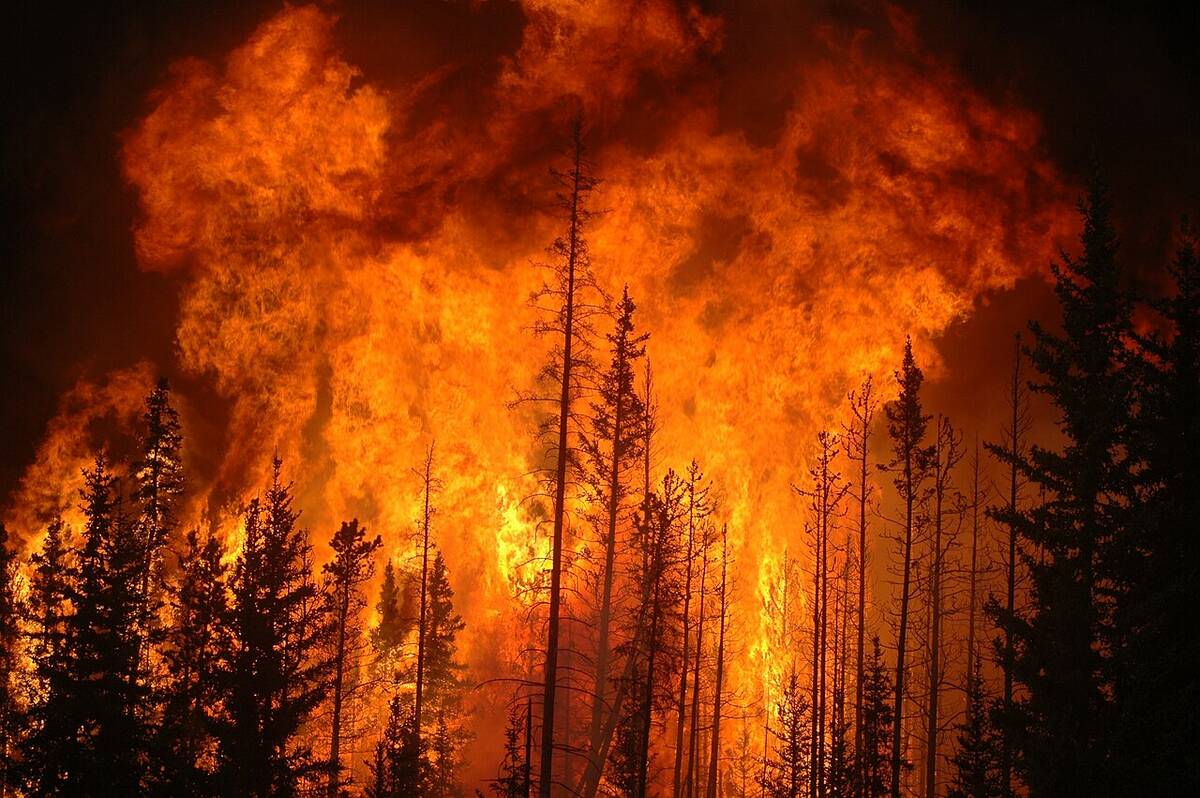
YEAR IN REVIEW: 2025 a year of weather extremes
Wildfires, drought and flash floods, oh my! Looking back at the year’s headline-grabbing events in Canada and around the world.

Are you surprised by how low the probabilities are? When I crunched the numbers over 20 years ago, I was taken aback at how low they were. While you can see there is variation between stations, they are statistically close, ranging from two per cent to about a five per cent chance in any given month. In Manitoba and Alberta the numbers are really close, with Saskatchewan a little drier and with fewer snowfalls of five cm or more.
When I look at the monthly data for different snowfall amounts ranging from 0.2 cm up to 25+ cm, I realized I could probably get away with using any station to represent snowfall data for the Prairies, which surprised me once again. Part of me was happy because it takes a lot of time to dig through all the data if we break it down province by province and station by station.
In my original analysis, I used knowledge gained in one of my university courses on water systems. In that course, we looked at stream flows and how to calculate the probability of 25-, 50-, and 100-year floods. Once I learned how to do this, I started thinking about snowfall and how often we should expect big snowfalls.
I went through the data for Winnipeg, since it has a long period of record and trends and, as it turns out, is fairly representative of most of the Prairies. Then I applied probability techniques to snowfall data.
Let’s dig into the numbers.
I’ll start with the point that, when it comes to precipitation, there are different periods in which to measure it. You can measure the amount of snow that falls in one day, from midnight to midnight. This is easy enough, since this is the way precipitation amounts are recorded.
However, we know Mother Nature doesn’t have a very accurate clock, so we can’t count on a snowfall occurring during this one-day period.
Another way to measure snowfall is to calculate how much fell in a given 24-hour period. To calculate this, you need access to hourly data, which is not readily available.
We can measure snowfall a third way by looking at a snow event, when we record snowfall amounts on two or more consecutive days. Even this can be problematic because we could see two different systems impact a region over a two- or three-day period, but for the sake of this study, I would consider that one big snowfall event.

In Winnipeg, during any given winter, there is a 90 per cent chance that there will be about 30 days when snow falls. About 50 per cent of the time, we will see around 45 snowfall days and there is less than a one in 100 chance of seeing more than 70 snowfall days in any winter.
Keep in mind that a snowfall day is any day that records snow, no matter how small. When we look at how much snow we can expect to fall during a snowfall day, we find that 90 per cent of the time we can expect 0.2 cm of snow, which basically means a light dusting.
Only about 10 per cent of our snowfalls are a light dusting, which is not really measurable. About 50 per cent of the time, we can expect more than two cm of snow, which means about half the time it snows, we see less than two cm. Lots of people like to argue with me over that one, but that is what the stats show.
If we look at how often to expect five cm or more, we find the probability has fallen to the five to 10 per cent range. That is, if we get 30 snowfall days during the winter, only about three will give us more than five cm of snow.
Looking at higher one-day snowfall amounts, we find that 10 cm or more occurs about once in every 25 snowfall days, which equates to once or maybe twice per winter.
Getting more than 30 cm of snow in one day is extremely rare. The probability is about 0.1 per cent, which means about one in every 1,000 snowfall days, or around once every 20 to 40 years in which we could expect this much snow in a single day. Before you say you can remember several 30 cm dumps of snow, remember these are single day, midnight to midnight stats.
Mother Nature rarely dumps all the snow conveniently during a midnight to midnight 24-hour period, so let’s look at snowfall events and how the numbers shape up.
In any given winter, we typically see about 20 snowfall events in which snowfall is recorded on two or more consecutive days. About half the time we could see as many as 28 of these snowfall events, and once in every 100 winters we could experience as many as 40.
As with the one-day snowfall amounts, most of these events only record small amounts of snow. About 90 per cent of the time, we would expect to see 0.5 cm or more and about 50 per cent of the time we would expect to see more than two cm.
Interestingly, or maybe surprisingly, these numbers are just about the same as for the one-day snowfall probabilities.
If we look at the probability of receiving more than five cm of snow during a snowfall event, we will see that it happens about 30 per cent of the time. At 10 cm or more, probability drops to about 10 per cent, or around twice per winter.
How often should we expect to see big storms with more than 30 cm of snow? According to my probabilities, it would be about one in every 200 snowfall events or about once every 10 years.



